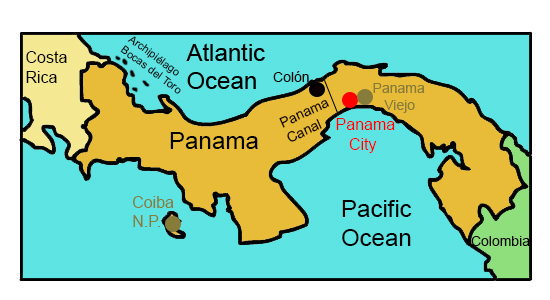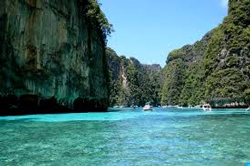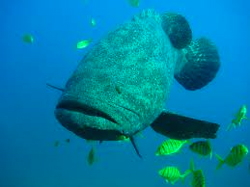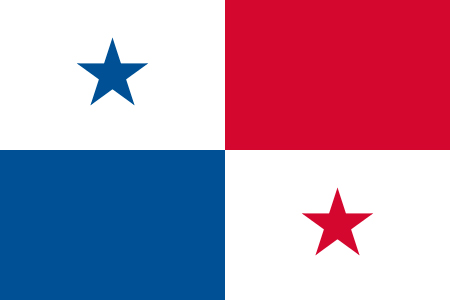Panama |
||||||||||||||||||||||||
|
Click the points on the map to learn more.

 |
Panama CityPanama City was founded by Spanish conquistadors in 1519. The original city was destroyed by English pirates under the command of Sir Henry Morgan in 1671. The ruins are now named Panama Viejo. The city was relocated three years later, to a site about five miles to the southwest. After Panama declared independence from Colombia in 1903, Panama City became its official capital city. Largely because of the Panama Canal, the city is a center for international business and trade, and is now the wealthiest city in Central America. |
| Back to Map | |
 |
ColónLocated on Panama's Atlantic coast, near the Panama Canal, Colón is the second largest city in Panama, The city was founded in 1850 by Americans working on the Panama Railroad. In 1953, the city was made a free trade zone, and is now the world’s second largest duty-free port. It is considered one of the most important ports in the Caribbean, as well as being a commercial center and tourist destination. |
| Back to Map | |
 |
Panama CanalBuilt by American engineers and laborers between 1904-1914, the Panama Canal was one of the world's great engineering feats. It construction marked the end of a centuries-long search for the famed Northwest Passage, a mythical natural waterway between the Atlantic and Pacific Oceans. The United States had sovereignty over the canal and the area around it (the Panama Canal Zone) until it transferred control to Panama between 1977-1999. Without the canal, ships traveling between the two bodies of water would need to travel south all the way around the southern tip of South America. |
| Back to Map | |
 |
Panama ViejoFounded in 1519, Panama Viejo represents the original Panama City. The settlement was a colonial outpost and seat of the Royal Court of Justice in the 16th and 17th centuries. During its 152 years of existence, the town experienced a major slave rebellion, fire, and an earthquake. It was eventually destroyed by pirates in 1671 and never rebuilt. The site is now a UNESCO World Heritage Site and an important archaeological site. |
| Back to Map | |
 |
Bocas del Toro ArchipelagoAt 97 square miles in area, Bocas del Toro is a group of islands off of the northwestern coast of Panama. The archipelago includes Isla Colón (the main island), nine other substantial islands, 50 cays, and some 200 tiny islets. Tourists enjoy surfing, sailing, snorkeling, diving, and forest trekking, among other activities. |
| Back to Map | |
 |
Coiba National ParkCoiba National Park is a marine reserve located off of Panama’s Pacific Coast, in the Gulf of Chiriquí. It covers 430,825 acres, including Coiba Island, 38 other islands, and the waters surrounding them. The park was named a UNESCO World Heritage Site in 2005. Because the island was once home to a notorious prison, with a reputation for torturing its inmates, it was largely unspoiled by humans. Today, the island is home to numerous subspecies that have evolved apart from their mainland counterparts. It is also home to a large population of scarlet macaws. |
| Back to Map | |
| Population: | 3,864,000 |
| Area: | 28,640 square miles |
| Capital City: | Panama City |
| Largest City: | Panama City |
| Currency: | Panamanian Balboa, US Dollar |
| Official Language: | Spanish |
| GDP (Gross Domestic Product) | $42.7 billion |
- Panama means “an abundance of fish”
- One third of Panama’s economy is generated by the Panama Canal
- Panama’s first woman president, Mireya Moscoso, was elected in 1999
-The rainy season in Panama lasts from May to January, with a short dry season from January to May
- The country’s biggest exports are coffee, shrimp and lobster, cotton, tobacco, and bananas
- Panama is the only place in the world where you can see the sun rise on the Pacific and set on the Atlantic
- Panama City is the only capital city that has a rainforest within city limits
- Panama has the second worst income distribution in Latin America - about one-fourth of the population lives in poverty. This means the economy generates a lot of money, but very little trickles down to the poor
- Panama hosts approximately 15,000 refugees, from Colombia
- Panama used to be part of the South American nation of Colombia, but seceded with help from the United States in 1903. The secession allowed the United States to build the Panama Canal
|
|
 |
|
The colors of the Panamanian flag represent the Liberal (red) and Conservative (blue) political parties of Panama. The white symbolizes the peace between them. The blue star represents purity and honesty, while the red star symbolizes the authority of the law. |
|